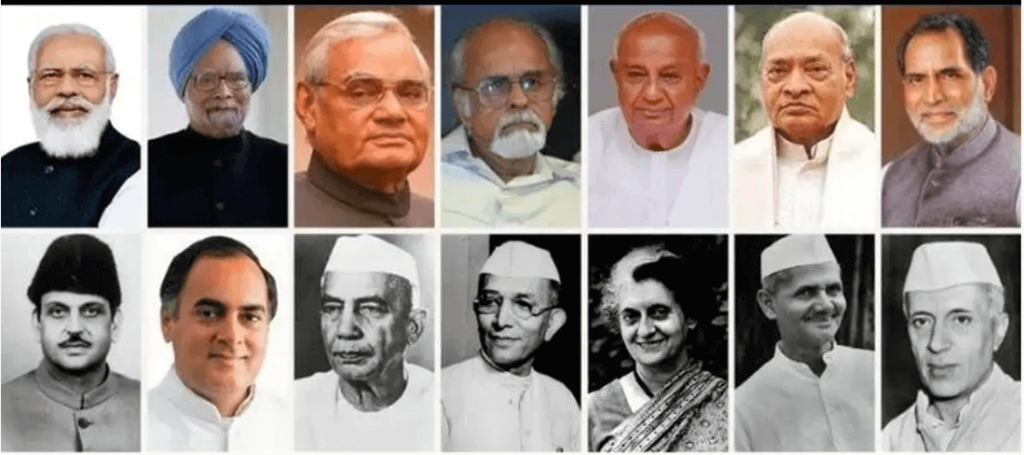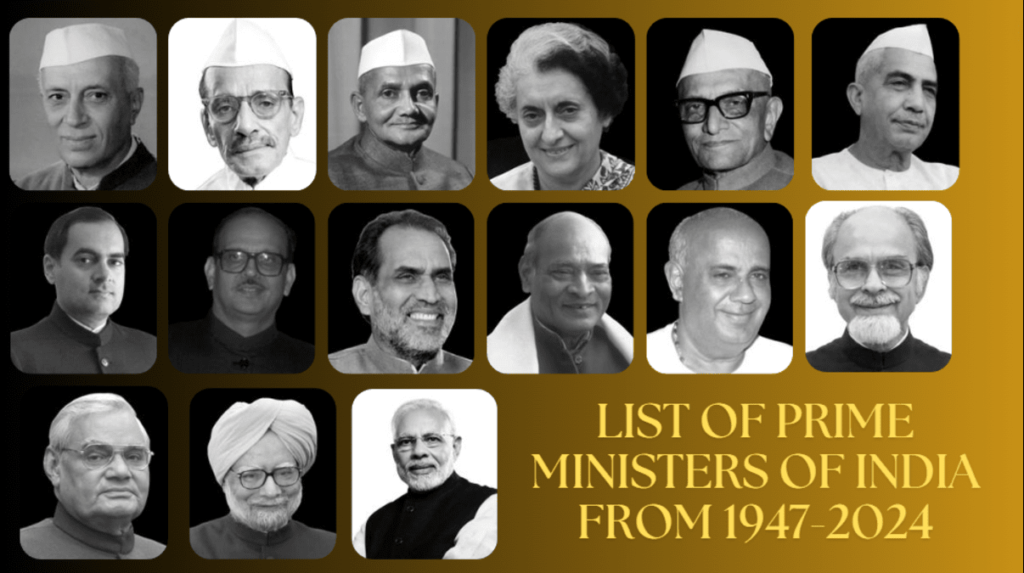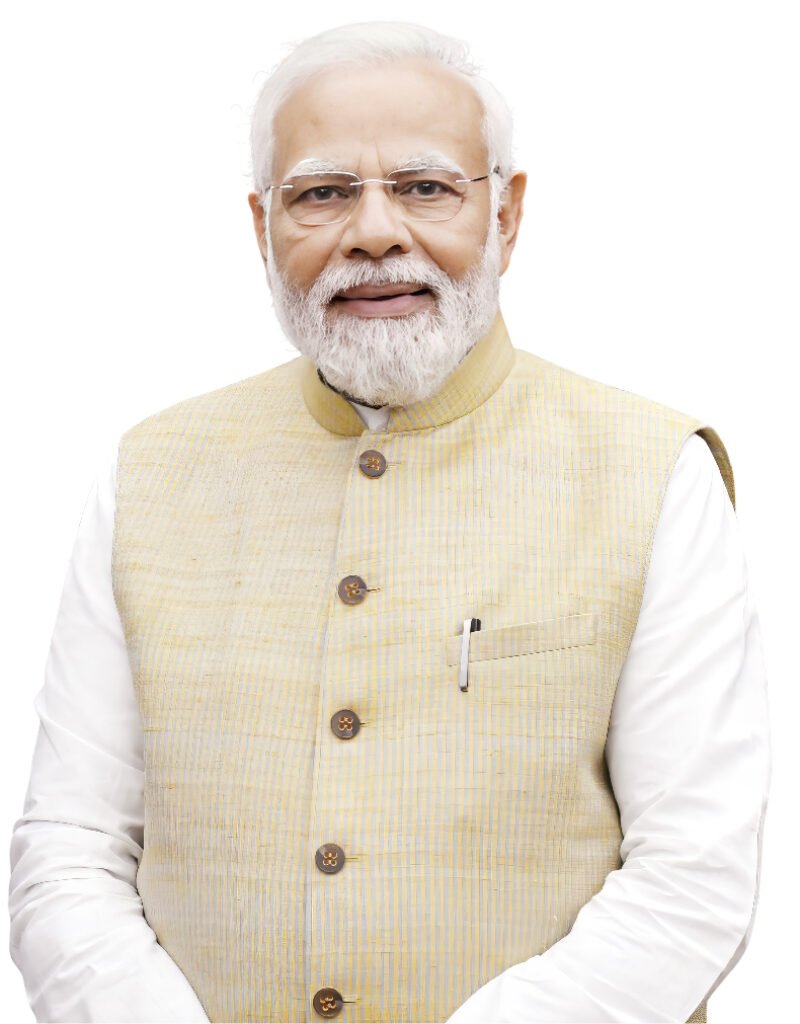
The Prime Minister is the executive head of the Government of India and is a Council of Ministers being appointed by them. The President of India is a nominal executive, but the real power lies with the List of Prime Ministers. The Prime Minister is generally the head of the largest party in the Lok Sabha (the lower house of Parliament). A complete list of Prime Ministers, 1947–2024 with details of Term, Age and tenure.
Read more: Statue of Unity
Table of Contents
| No. | Name | Term | Party | Key Achievements | Duration |
| 1 | Jawaharlal Nehru | August 15, 1947 – May 27, 1964 | Indian National Congress | First PM of independent India, architect of modern India, major role in independence, championed secularism. | 16 years, 286 days |
| 2 | Gulzarilal Nanda (Acting) | May 27, 1964 – June 9, 1964 | Indian National Congress | Acting PM after Nehru’s death, caretaker government. | 13 days |
| 3 | Lal Bahadur Shastri | June 9, 1964 – January 11, 1966 | Indian National Congress | Led India during the 1965 Indo-Pak war, promoted the slogan “Jai Jawan Jai Kisan.” | 1 year, 216 days |
| 4 | Gulzarilal Nanda (Acting) | January 11, 1966 – January 24, 1966 | Indian National Congress | Acting PM after Lal Bahadur Shastri’s death. | 13 days |
| 5 | Indira Gandhi | January 24, 1966 – March 24, 1977 | Indian National Congress | India’s first female Prime Minister led India through the 1971 war with Pakistan and imposed the Emergency in 1975. | 11 years, 59 days |
| 6 | Morarji Desai | March 24, 1977 – July 28, 1979 | Janata Party | First non-Congress PM, focused on anti-corruption and administrative reforms. | 2 years, 126 days |
| 7 | Charan Singh | July 28, 1979 – January 14, 1980 | Janata Party (Secular) | Led a minority government, resigned after failing to secure support. | 170 days |
| 8 | Rajiv Gandhi | October 31, 1984 – December 2, 1989 | Indian National Congress | Youngest PM at 40, promoted IT and telecom, oversaw the Bhopal Gas tragedy response, resigned after electoral loss. | 5 years, 32 days |
| 9 | Vishwanath Pratap Singh | December 2, 1989 – November 10, 1990 | Janata Dal | Introduced Mandal Commission recommendations, focusing on social justice and reservations for backward classes. | 343 days |
| 10 | Chandra Shekhar | November 10, 1990 – June 21, 1991 | Janata Dal (Secular) | His tenure was short due to instability and internal conflicts within his coalition. | 223 days |
| 11 | P. V. Narasimha Rao | June 21, 1991 – May 16, 1996 | Indian National Congress | Oversaw major economic liberalization, led India’s economic reforms in 1991, and strengthened India’s position globally. | 4 years, 330 days |
| 12 | Atal Bihari Vajpayee | May 16, 1996 – June 1, 1996, March 19, 1998 – May 22, 2004 | Bharatiya Janata Party (BJP) | Played a key role in nuclear tests, infrastructure development, and improved Indo-Pakistani relations. | 16 days (1996), 6 years, 64 days (1998-2004) |
| 13 | H. D. Deve Gowda | June 1, 1996 – April 21, 1997 | Janata Dal | Led a coalition government, focused on rural development and agricultural reforms. | 324 days |
| 14 | Inder Kumar Gujral | April 21, 1997 – March 19, 1998 | Janata Dal | Known for the “Gujral Doctrine,” which emphasized India’s foreign policy toward its neighbors. | 332 days |
| 15 | Manmohan Singh | May 22, 2004 – May 26, 2014 | Indian National Congress | Led India through an economic boom, continued economic reforms, managed foreign relations, and handled scandals. | 10 years, 4 days |
| 16 | Narendra Modi | May 26, 2014 – Present (2024) | Bharatiya Janata Party (BJP) | Focused on economic reforms, digital India, foreign policy reshaping, and national security initiatives. | 10 years, 87 days (as of 2024) |

Duties, Powers and Responsibilities of Prime Minister
The Indian Prime Minister (PM) is the head of executive of the nation and has many significant duties:
● Executive: The Prime Minister is the Head of Government and organizes and controls the Council of Ministers, acting within government to carry out executive functions.
● Cabinet Leadership: The Cabinet agenda is set by the Prime Minister, who assigns portfolios to the ministers and chairs the Cabinet meetings.
● Relation Between the President and Government: The PM communicates to the president every decision taken by the Cabinet. One important function of the prime minister is to ensure that government policies are conveyed to the president.
● Impact on Law Making: The Prime Minister has a major role in developing the policies and laws which be put forward to Parliament. With the Lok Sabha being governed by a PM who heads the largest party, this can have significant consequences for legislation.
● National security: The Prime Minister is one of the primary actors in national security and foreign policy, imposing his/her will on diplomacy, national defense, and intelligence agencies.

Interesting Information Related to Indian Prime Ministers
● Jawaharlal Nehru: The first Indian Prime Minister, Nehru is often regarded as the principal architect of modern India, having established a parliamentary democracy and a secular state. He holds the record for longest-serving chief minister in India, with a tenure of 16 years and 286 days.
● Indira Gandhi: The only female Indian Prime Minister, she was one of the biggest influences on Indian politics. She was indomitable and decisive, strongest during the 1971 Indo-Pakistani War in charge to dawn on Pakistan briefly and when she proclaimed emergency in 1975-77. She represented in two nonconsecutive terms, totaling more than 15 years.
● Rajiv Gandhi: Youngest PM Rajiv Gandhi was the youngest of them; he became PM in the age of just 40 and served as PM from 1984 – 1989. He is known for advancing technology during his time in office, including the growth of telecommunications and computerization in India.
● Morarji Desai: The first-ever Indian Prime Minister from outside of Congress, Morarji Desai was committed to eradicating corruption and social justice. He was also the oldest person to become Prime Minister, coming to office at 81.
●Narendra Modi: The current Prime Minister in power since 2014, he took huge decisive actions by introducing economic reforms, demonetization, GST, and working out foreign policy. His third term started after he was re-elected in 2019.
1. Who is the longest-serving Indian Prime Ministers?
Jawaharlal Nehru, serving from 15 August 1947 to 27 May 1964 (16 years, 286 days).
2. Who was the first female Prime Minister?
Indira Gandhi, who served two non-consecutive terms from 1966-1977 and 1980-1984.
3. Who was the youngest Prime Minister?
Rajiv Gandhi at age 40, serving from 1984-1989.




